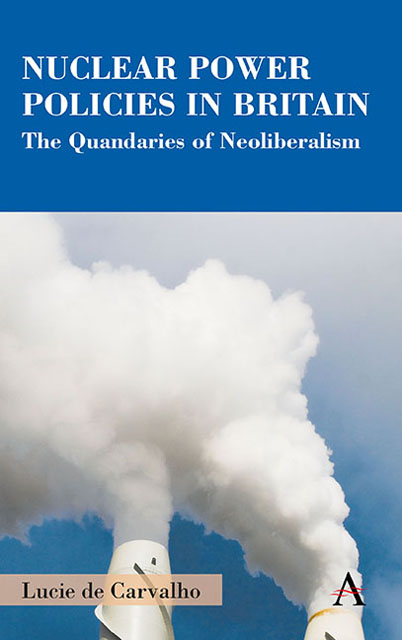Chapter One - The British Nuclear State: An Anatomy
Published online by Cambridge University Press: 10 January 2023
Summary
The recent government support to the UK nuclear industry was strongly contested for a flurry of nuclear-specific factors, ranging from its questionable commercial competitiveness, the safety and security stakes its very operations entail, the unresolved matter of waste management and finally the restrictions it levels for the development of alternative and more sustainable sources of energy production. The latest nuclear revival practically came as a bolt from the blue, as the 2006 Energy Review and 2007 White Paper revived the nuclear industry from the slumber it had fallen into since it had last been politically scrutinised in May 1995. The 1995 Energy Review had reached the conclusion that all new nuclear build projects were to be cancelled on the grounds that nuclear power was no longer deemed economically viable – a decision favoured by both the Central Electricity Generating Board (CEGB) and Nuclear Electric at the time. Yet, as opposed to a sustained decline in political interest visible in many other Western countries, the British governments in power have remained steadfast in their will to carry the nuclear project through for the past fifteen years. The attachment of the British government to the nuclear technology has seemingly been second to none in the British industrial landscape. For many commentators, it was not necessarily the product of an ideological commitment to the industry, as opposed to the French case for instance, though; it has had more to do with the sector's constrained innovation capabilities, commonly known as technological entrapment or lock-in in industrial policies, or more broadly, path dependence in political science. First applied in economics and then developed in political science in the 1990s, the concept of path dependence refers to historical and in-built restrictions on policy change or shifts in political trajectories; this concept helps trace forms of continuity and discontinuity in public policy. In this line of analysis, changes in policy are mostly prompted by exogeneous shocks or critical junctures which tend to upset the established institutional order and create temporary windows of political opportunity to change political course.
This chapter thus acts as a scene-setter and offers to put recent political choices into historical perspectives, to understand today's governmental commitments and how they fall in line – or stray – from the original roots of the British nuclear venture in the late 1950s.
- Type
- Chapter
- Information
- Nuclear Power Policies in BritainThe Quandaries of Neoliberalism, pp. 23 - 50Publisher: Anthem PressPrint publication year: 2022

